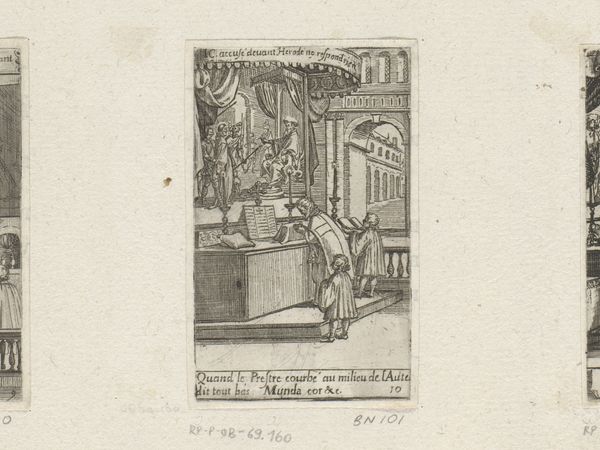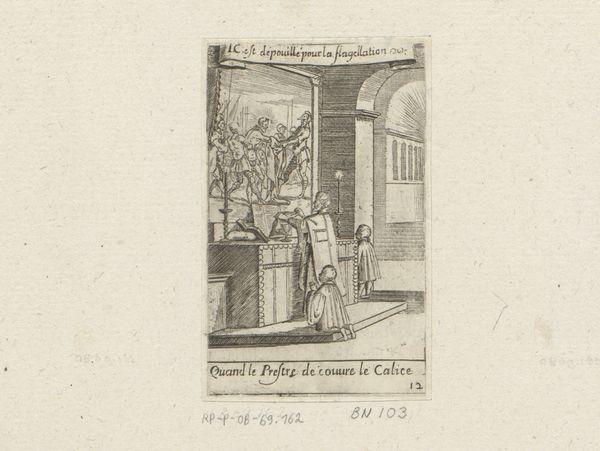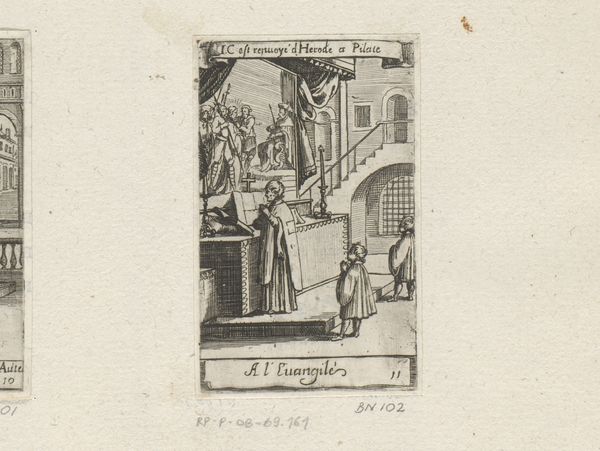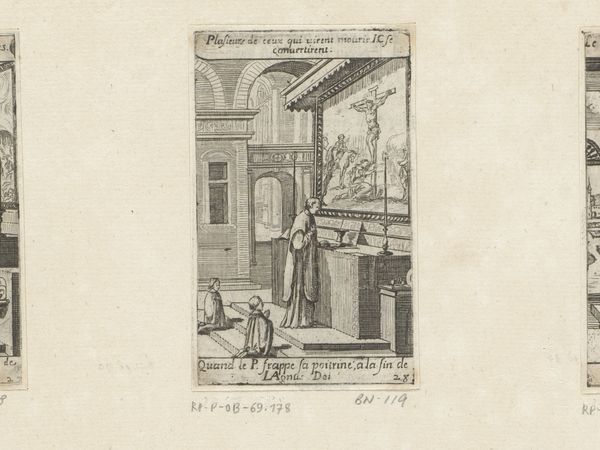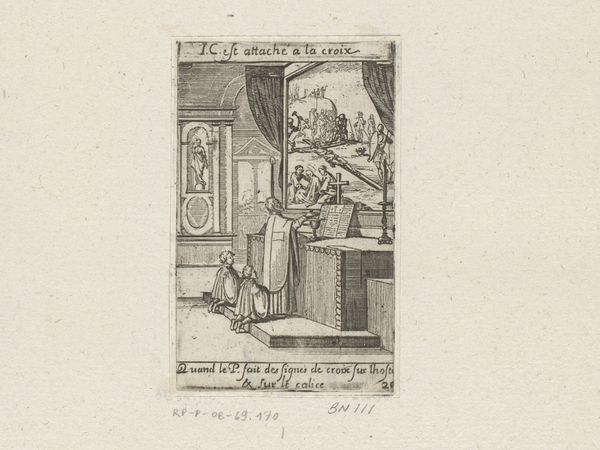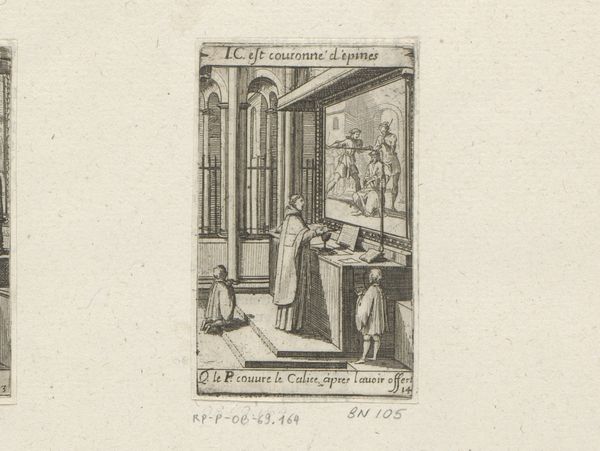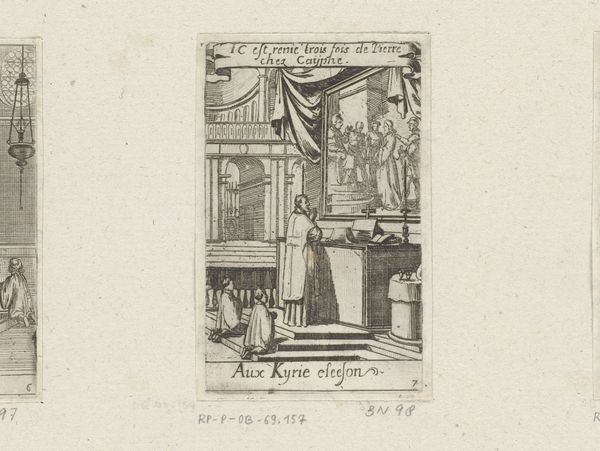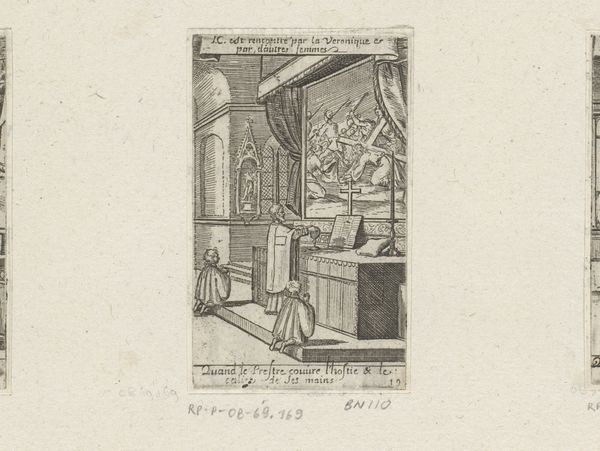
print, etching, engraving
#
narrative-art
#
baroque
# print
#
etching
#
figuration
#
line
#
genre-painting
#
history-painting
#
engraving
Dimensions: height 84 mm, width 52 mm
Copyright: Rijks Museum: Open Domain
Curator: We're looking at "Priest Washing His Hands in a Bowl" by Sébastien Leclerc I, created around 1661. This piece, currently residing in the Rijksmuseum, employs etching and engraving techniques. It strikes me as exceptionally dense formally, the close detail producing rich tonality in monochrome. Editor: It's striking. My immediate reaction is one of deliberate dissociation. The act of washing hands as a symbol... it's loaded, isn't it? Pontius Pilate comes instantly to mind. Curator: Precisely. Observe the careful organization of space. Leclerc has divided the composition vertically, creating two distinct, yet interconnected narratives. On the left we see what may well be Pilate, with the presentation of Jesus before him. Then on the right we have a robed figure with an attendant presenting a ewer. The implied relationship between the two sides is central. The composition echoes that, it binds both moments within a tight symmetrical frame. Editor: Symbolically, it’s powerful. Washing hands becomes an act of denying responsibility, a visible and culturally understood performance. It is not just an illustration, but an expression of moral conflict and transference of blame. We read into it the universality of deflecting blame. Curator: Note how Leclerc uses linear precision. The density of the lines creates volume, which directs our eye in very specific paths, yet with limited tonal range, as if it deliberately limits expressive interpretation. In structural terms, there's an almost mathematical clarity to the organization of figures, foreground versus background, and the relation to linear depth, all framed as performative space. Editor: Yet the ritualistic aspect can’t be denied. The ewer and basin, the gesture itself… it speaks to cleansing, yet implies guilt simultaneously. It is potent as commentary on the justifications humanity makes for morally suspect choices, and a method to project consequence away from itself. Curator: Indeed. There is much to consider formally; Leclerc certainly understood how compositional structure informs interpretive possibilities. Editor: A small work, but symbolically enormous. One walks away pondering those uncomfortable aspects of human nature.
Comments
No comments
Be the first to comment and join the conversation on the ultimate creative platform.

